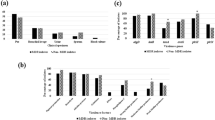Abstract
Successful pathogenicity often resulted from a complicated association between virulence and antibiotic resistance in Pseudomonas aeruginosa infections. Therefore, the current study aimed to investigate the relationship between the las system and antibiotic resistance. Seventy-three (73) P. aeruginosa isolates were collected from burn wounds (26.02%), blood cultures (30.13%), catheters (12.32%), and urine culture (31.50%). Among the 73 collected isolates, 22 isolates were considered as multi-drug resistant (MDR) and 11 isolates as extensively-drug resistant (XDR). Furthermore, phenazines and LasA protease were detected among 21.91% and 32.87% of isolates, respectively. Quantitative real-time PCR assessment of KPC, MBL, and lasI/R indicated that resistance and virulence factors are more expressed in XDR strains than MDR strains. Also, the expression level of KPC and MBL reduced in non-biofilm forming strains. However, increased expression levels of lasI, lasR, and the KPC genes were observed in LasA and LasB protease producing strains. Interestingly, 16 known sequence types (including ST108, ST260, ST217) and three novel STs (ST2452, ST2427, and ST2542) were characterized among the collected isolates, which are related to the virulence and resistance. In MDR-XDR strains, a strong correlation between lasI/R and the variants of antibiotic resistance genes was found. In conclusion, the pathogenicity of P. aeruginosa may increase the prevalence of antibiotic-resistant strains.



Similar content being viewed by others
Data Availability
The datasets used and/or analyzed during the current study are available from the corresponding author on reasonable request.
Abbreviations
- MDR:
-
Multidrug-resistant
- XDR:
-
Extensively drug-resistant
- ESBL:
-
Extended-spectrum β-lactamase
- MBL:
-
Metallo β-lactamase
- QS:
-
Quorum sensing
- CF:
-
Cystic fibrosis
- MEGA5:
-
Molecular evolutionary genetics analysis version 5
References
Ding F et al (2018) The Pseudomonas aeruginosa orphan quorum sensing signal receptor QscR regulates global quorum sensing gene expression by activating a single linked operon. mBio 9(4):e01274-18
Rutherford ST, Bassler BL (2012) Bacterial quorum sensing: its role in virulence and possibilities for its control. Cold Spring Harbor perspectives in medicine 2(11):a012427
Venturi V (2006) Regulation of quorum sensing in Pseudomonas. FEMS Microbiol Rev 30(2):274–291
Steindler L et al (2009) LasI/R and RhlI/R quorum sensing in a strain of Pseudomonas aeruginosa beneficial to plants. Appl Environ Microbiol 75(15):5131–5140
Lee J, Zhang L (2015) The hierarchy quorum sensing network in Pseudomonas aeruginosa. Protein Cell 6(1):26–41
Lau GW et al (2004) The role of pyocyanin in Pseudomonas aeruginosa infection. Trends Mol Med 10(12):599–606
Hall S et al (2016) Cellular effects of pyocyanin, a secreted virulence factor of Pseudomonas aeruginosa. Toxins (Basel) 8(8):e236
Furiga A et al (2016) Impairment of Pseudomonas aeruginosa biofilm resistance to antibiotics by combining the drugs with a new quorum-sensing inhibitor. Antimicrob Agents Chemother 60(3):1676–1686
Bonomo RA et al (2017) Carbapenemase-producing organisms: a global scourge! Clin Infect Dis 66(8):1290–1297
Maseda H et al (2004) Enhancement of the mexAB-oprM efflux pump expression by a quorum-sensing autoinducer and its cancellation by a regulator, MexT, of the mexEF-oprN efflux pump operon in Pseudomonas aeruginosa. Antimicrob Agents Chemother 48(4):1320–1328
Cabot G et al (2016) Evolution of Pseudomonas aeruginosa antimicrobial resistance and fitness under low and high mutation rates. Antimicrob Agents Chemother 60(3):1767–1778
Bogiel T et al (2017) The prevalence of exoenzyme S gene in multidrug-sensitive and multidrug-resistant Pseudomonas aeruginosa clinical strains. Pol J Microbiol 66(4):427–431
Jorth P et al (2017) Evolved aztreonam resistance is multifactorial and can produce hypervirulence in Pseudomonas aeruginosa. MBio 8(5):e00517–e617
Mahon CR, Lehman DC, Manuselis G (2007) Textbook of Diagnostic microbiology. Saunders Elsevier, Amsterdam
El-Fouly MZ et al (2015) Biosynthesis of pyocyanin pigment by Pseudomonas aeruginosa. J Radiat Res Appl Sci 8(1):36–48
O'Toole GA (2011) Microtiter dish biofilm formation assay. J Vis Exp 47:2437
Ołdak E, Trafny EA (2005) Secretion of proteases by Pseudomonas aeruginosa biofilms exposed to ciprofloxacin. Antimicrob Agents Chemother 49(8):3281–3288
Fazeli N, Momtaz H (2014) Virulence gene profiles of multidrug-resistant Pseudomonas aeruginosa isolated from Iranian hospital infections. Iran Red Crescent Med J 16(10):e15722
Fazeli H et al (2014) Molecular epidemiology and mechanisms of antimicrobial resistance in Pseudomonas aeruginosa isolates causing burn wound infection in Iran. J Chemother 26(4):222–228
Lima JLDC et al (2018) Biofilm production by clinical isolates of Pseudomonas aeruginosa and structural changes in LasR protein of isolates non biofilm-producing. Braz J Infec Dis 22(2):129–136
Quale J et al (2006) Interplay of efflux system, ampC, and oprD expression in carbapenem resistance of Pseudomonas aeruginosa clinical isolates. Antimicrob Agents Chemother 50(5):1633–1641
Uz Zaman T et al (2014) Multi-drug carbapenem-resistant Klebsiella pneumoniae infection carrying the OXA-48 gene and showing variations in outer membrane protein 36 causing an outbreak in a tertiary care hospital in Riyadh Saudi, Arabia. Int J Infect Dis 28:186–192
Geyer CN, Hanson ND (2014) Multiplex high-resolution melting analysis as a diagnostic tool for detection of plasmid-mediated AmpC β-lactamase genes. J Clin Microbiol 52(4):1262–1265
Pfaffl MW (2001) A new mathematical model for relative quantification in real-time RT-PCR. Nucleic Acids Res 29(9):e45
Vernez I et al (2005) Population genetic analysis of Pseudomonas aeruginosa using multilocus sequence typing. FEMS Immunol Med Microbiol 43(1):29–35
Dou Y et al (2017) Pseudomonas aeruginosa prevalence, antibiotic resistance and antimicrobial use in Chinese burn wards from 2007 to 2014. J Int Med Res 45(3):1124–1137
Acar A et al (2019) Pooled prevalence and trends of antimicrobial resistance in Pseudomonas aeruginosa clinical isolates over the past 10-years in Turkey: A meta-analysis. J Glob Antimicrob Resist 18:64–70
Liew SM et al (2019) Antimicrobial susceptibility and virulence genes of clinical and environmental isolates of Pseudomonas aeruginosa. PeerJ 7:e6217–e6217
Choudhary V, Pal N, Hooja S (2019) Prevalence and antibiotic resistance pattern of Metallo-β-lactamase-producing Pseudomonas aeruginosa isolates from clinical specimens in a tertiary care hospital. J Mahatma Gandhi Inst Med Sci 24(1):19–22
Ghasemian A et al (2018) Prevalence of clinically isolated metallo-beta-lactamase-producing Pseudomonas aeruginosa, coding genes, and possible risk factors in Iran. Iran J Pathol 13(1):1–9
Hwang W, Yoon SS (2019) Virulence characteristics and an action mode of antibiotic resistance in multidrug-resistant Pseudomonas aeruginosa. Sci Rep 9(1):487–487
Tahmasebi H et al (2019) Role and function of KPC and MBL enzymes in increasing the pathogenicity of Pseudomonas aeruginosa isolated from burn wounds. J Babol Univ Med Sci 21(1):127–134
El-Aziz NKA, El-Hamid MIA, El-Naenaeey E-SY (2018) A complex hierarchical quorum-sensing circuitry modulates phenazine gene expression in Pseudomonas aeruginosa. J Infect Dev Ctries 11(12):919–925
Hwang S et al (2016) Network-assisted investigation of virulence and antibiotic-resistance systems in Pseudomonas aeruginosa. Sci Rep 6:26223
Rossi Gonçalves I et al (2017) Carbapenem-resistant Pseudomonas aeruginosa: association with virulence genes and biofilm formation. Braz J Microbiol 48(2):211–217
Al Dawodeyah HY et al (2018) Antimicrobial resistance and putative virulence genes of Pseudomonas aeruginosa isolates from patients with respiratory tract infection. Germs 8(1):31–40
Lee J-Y, Peck KR, Ko KS (2013) Selective advantages of two major clones of carbapenem-resistant Pseudomonas aeruginosa isolates (CC235 and CC641) from Korea: antimicrobial resistance, virulence and biofilm-forming activity. J Med Microbiol 62(7):1015–1024
Beceiro A, Tomás M, Bou G (2013) Antimicrobial resistance and virulence: a successful or deleterious association in the bacterial world? Clin Microbiol Rev 26(2):185–230
Rampioni G et al (2017) Effect of efflux pump inhibition on Pseudomonas aeruginosa transcriptome and virulence. Sci Rep 7(1):11392–11392
Alcalde-Rico M et al (2016) Multidrug efflux pumps at the crossroad between antibiotic resistance and bacterial virulence. Front Microbiol 7:1483
Poole K (2011) Pseudomonas aeruginosa: resistance to the max. Front Microbiol 2:65
Telling K et al (2018) Multidrug resistant Pseudomonas aeruginosa in Estonian hospitals. BMC Infect Dis 18(1):513
Guzvinec M et al (2014) Sequence types 235, 111, and 132 predominate among multidrug-resistant Pseudomonas aeruginosa clinical isolates in Croatia. Antimicrob Agents Chemother 58(10):6277–6283
Boehmer T et al (2018) Phenotypic characterization and whole genome analysis of extended-spectrum beta-lactamase-producing bacteria isolated from dogs in Germany. PLoS ONE 13(10):e0206252
Vatansever C et al (2020) Co-existence of OXA-48 and NDM-1 in colistin resistant Pseudomonas aeruginosa ST235. Emerg Microbes Infect 9(1):152–154
Chen SH et al (2014) Multilocus sequencing typing of Pseudomonas aeruginosa isolates and analysis of potential pathogenicity of typical genotype strains from occupational oxyhelium saturation divers. Undersea Hyperb Med 41(2):135–141
Ocampo-Sosa AA et al (2015) Draft genome sequence of the quorum-sensing and biofilm-producing Pseudomonas aeruginosa strain Pae221, belonging to the epidemic high-risk clone sequence type 274. Genome Announc 3(1):e01343–e1414
Acknowledgments
The authors of this article are grateful to Hamadan University of Medical Sciences for their financial support.
Funding
This work was supported by the Research Centre of Hamadan University of Medical Sciences on the Grant Number 9510075755. This funding's devoted just to purchasing materials used in our study.
Author information
Authors and Affiliations
Contributions
SD performed microbiological and molecular tests and wrote the manuscript. MRA supervised all of the stages of designing the study, conducting the research, and writing the manuscript. MRP, MYA and SSA play a role in Project Administration.
Corresponding author
Ethics declarations
Conflicts of interest
All authors declare that they have no conflict of interest.
Ethics approval
This study was approved by the Ethics Committee of Hamadan University of Medical Sciences (Code No: IR.UMSHA.REC.1395402.) about the consent to participate is not applicable.
Consent for publication
Not Applicable.
Research involving Human Participants and/or Animals
In this study, there isn’t any research involving Human participant or animals.
Informed consent
Not Applicable.
Additional information
Publisher's Note
Springer Nature remains neutral with regard to jurisdictional claims in published maps and institutional affiliations.
Rights and permissions
About this article
Cite this article
Dehbashi, S., Pourmand, M.R., Alikhani, M.Y. et al. Coordination of las regulated virulence factors with Multidrug-Resistant and extensively drug-resistant in superbug strains of P. aeruginosa. Mol Biol Rep 47, 4131–4143 (2020). https://doi.org/10.1007/s11033-020-05559-4
Received:
Accepted:
Published:
Issue Date:
DOI: https://doi.org/10.1007/s11033-020-05559-4




